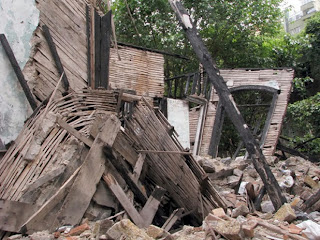As often happens in up-and-coming areas, lots of people are purchasing real estate in Calgary with the intention of demolishing the existing home and building a new structure on the lot. That can be a great idea, allowing you to build your dream home while raising the value of your investment at the same time.
One thing to keep in mind before you sign the papers and take the first step, however, is that the law requires you to test a home for asbestos before it’s demolished. The reason is simple: Pulverizing asbestos-filled building materials and releasing them into the air could be a severe health risk. Occupants, neighbors, and even construction workers can all breathe in dangerous material for days or weeks on end. And so, guidelines specify that the home be checked for asbestos before this type of work begins.
Unfortunately, some buyers overlook this detail, and it can come back to haunt them later. Recently, we were called to inspect a home that was set to be demolished, and found that asbestos was present within the walls. Because the new owners hadn't thought about this detail, or budgeted for it, the expense of removing the asbestos safely – which we must point out again, was required by law – took a pretty big bite out of their construction fund.
Avoiding the same mistake is easy. Make asbestos testing and removal a part of your home demolition budget. Or better yet, have the home inspected before you actually buy it in the first place so you can be sure you won’t be set for any nasty surprises later. Testing for asbestos in a Calgary home that you plan to knock down might not be convenient, but it is a legal requirement.
Call Amity Environmental today at 403-667-8264 to schedule an inspection.








